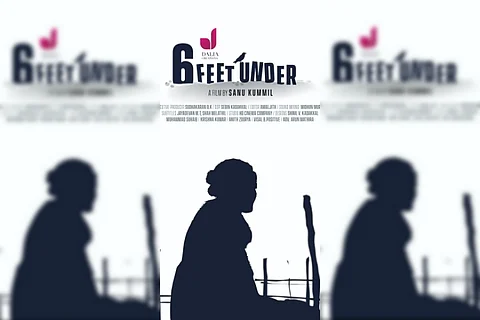

When she said goodbye to her girls on a Saturday, Girija did not know that she would not see them again. The girls had gone to stay at a relative’s place for the summer. One had finished class X, and the other was looking for a job. “The next Monday, they came home in coffins, dead. They’d drowned in flash flood. Three days later, my elder girl got an offer letter,” Girija says, sitting in her hut in Vembayam, Thiruvananthapuram.
The girls were buried there, inside that hut, in a hole dug under the kitchen. And a few days later, their father, who couldn’t stand the death of his daughters and took his own life, was also buried there.
“There is no space elsewhere. All I have is these two cents of land,” Girija says.
Girija’s story is the opening scene of a documentary, Six Feet Under, directed by Sanu Kummil, and featured at the International Documentary and Film Festival of Kerala. There’s been no need for a voiceover, and no music to make you feel for the atrocities Dalit communities still go through even to bury their dead. Sanu travels through Kerala, to tell stories like Girija’s, in different parts of the state – Kollam, Alappuzha, Kozhikode, Malappuram and Palakkad.
“It was about 10 years ago that I had first reported a local story of a person buried under the kitchen in a village in Kollam,” Sanu, who has been working as a journalist in a Malayalam daily, says. That day he took a photo, which got carried in the local city page. More such stories came from the Ittiva panchayat in Chadayamangalam, Kollam.
“I ran a four-day series of these stories, calling it, ‘In need of six-feet soil’. I wrote in my story that there are wastelands that could be used as public graveyards. The Panchayat had then said it could be done, and I finished the last of my stories on this note of hope. But nothing changed. Later, I learnt that the people who lived around the wastelands – people of other communities – had a problem with Dalits being buried there,” Sanu says.
Sanu Kummil
Sanu began travelling to find out if other districts too faced this problem and he got more stories everywhere, all with the same plots: There is no land to bury the dead. It has to be either within the houses or else, the roads. “The community believes in burying their dead, not cremation, like how other Hindu communities do. But when there is no other way, they go for electric cremation,” Sanu says.
Some of the bereaved point out how other communities have their churches and mosques to bury the dead and how reverently that’s done. “It’s not that the dead bodies are a problem for these people (who complain against having public graveyards). For in the same locality, there are graveyards of churches and mosques. So the problem is of Dalit bodies being buried there,” says activist Dhanya Raman in the documentary.
Girija’s and her girls’ story had been a big revelation and the then Chief Minister Oommen Chandy allotted Rs 1 lakh to every panchayat to build public graveyards. “It is a law, that every panchayat should have a public graveyard. But the money did no good. No one would give land for this price, and especially for this purpose. The neighbourhood would always have an issue and the politicians do not want to displease them,” Sanu says.
The land reforms in Kerala have, in a way, contributed to this problem, you hear activists say in the documentary. Dhanya Raman says how the colonisation of Dalits has largely sidelined them. “When land reforms were introduced, the Dalit communities were allotted colonies, but they were isolated. When they say they are from the particular colony, it would be clear what their caste is and they’d still be discriminated. And when the families grew and there were more people, the colonies were crammed. People simply had to bury their dead in their houses,” Sanu says.
The sadder part is that the issue, which Sanu himself had covered committedly, does not even get a front-page space. It is always buried in the inside pages, under local stories, much like the bodies of the neglected communities that they are about.